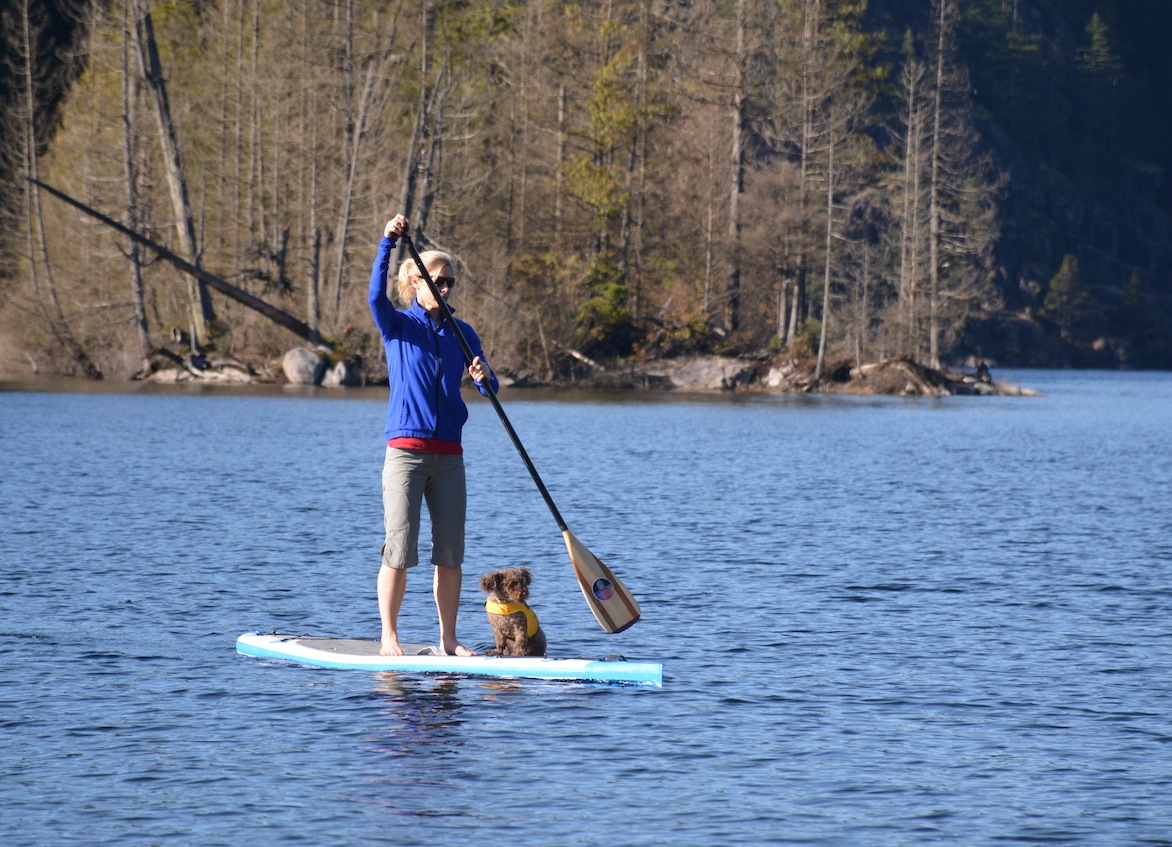
The first time I went stand-up paddling was while on vacation several years ago.
Over a three-week period, I paddled almost daily and I held my paddle wrong for at least half of that time. I had the angle of the blade facing the wrong way which was not only incorrect but was creating drag while I paddled.
I had numerous unnecessary arguments with my friend who tried to convince me I was holding my paddle wrong.
Being quite stubborn I was convinced that ‘my way’ was right until I was able to search online and learn the proper way to hold my paddle.
The reason so many people get this basic technique wrong when they first start out is because the proper way to hold a SUP paddle feels kind of backwards.
Once you get used to the feel, it becomes natural and of course far more efficient.
Learning a few basics about holding a SUP paddle will not only help you to not look like a total newbie but also make your paddling stroke far more efficient. That means you’ll go faster and further with less effort.
Master the five steps below and you will start to look like a pro.
1. Get The Length Right
Getting the length of your paddle right is half the battle.
If it is too short you will be hunched over while you are paddling. Too long and you won’t be nearly as efficient plus it will take more effort.
The ideal length of your paddle will vary depending on if you are surfing, racing or touring.
- Surf – For surf it is recommended that your paddle is roughly 6 – 7 inches taller than your height.
- Touring – For touring, it is recommended that your paddle is 9 – 10 inches taller than your height.
- Racing – For racing it is recommended that your paddle is roughly 12 inches taller than the rider.
For the majority of us who are paddling for fun on lakes, ocean bays and calm rivers go with 9 – 10 inches taller than your height.
An easy way to measure is to hold one arm straight up. Then hold your paddle up against your arm. The handle of your SUP paddle should be at your wrist height. See pics below.
If your paddle is not adjustable and you are swapping paddles between friends and family, it’s not that big of a deal.
Your stroke and posture will simply be far more efficient if your paddle is the correct length for your height.

Correct way to measure SUP paddle length for touring
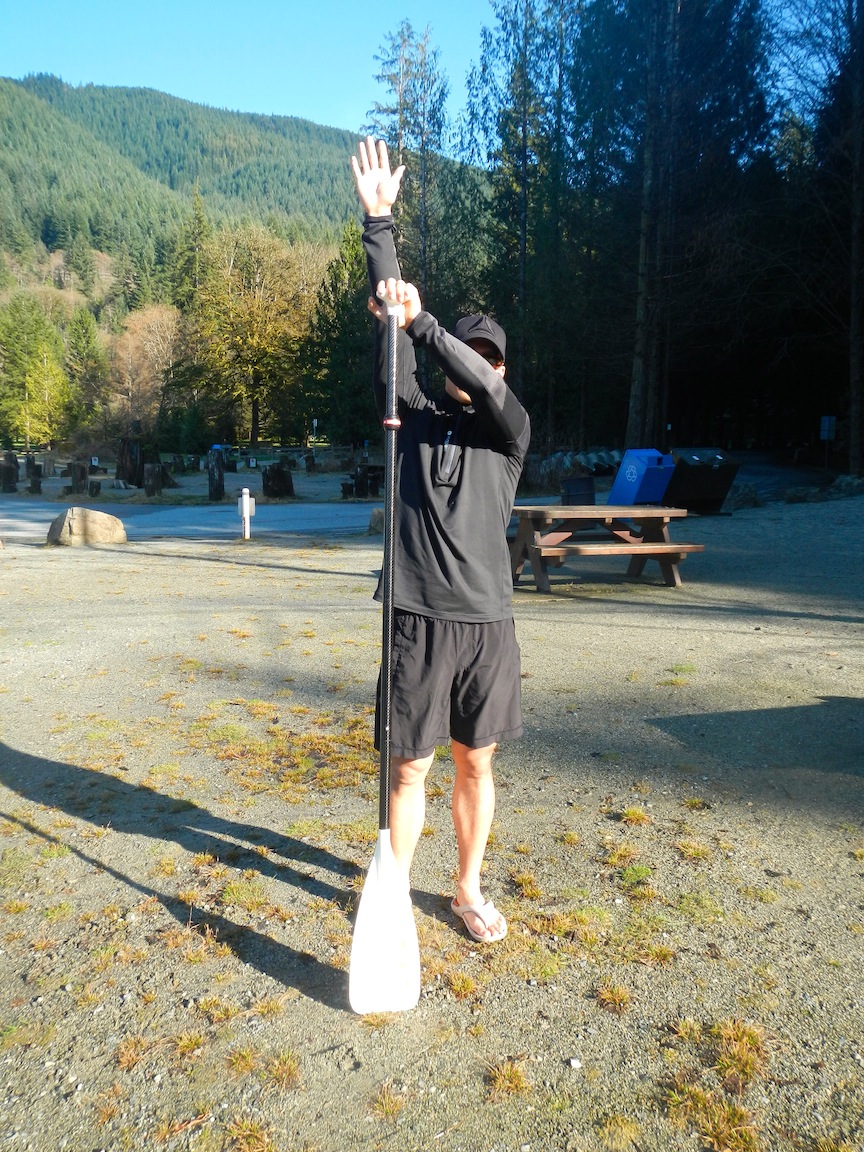
Incorrect SUP paddle length
2. Master Your Posture
Most of us are a little shaky when first starting out. The right posture can make a big difference in how comfortable you feel and how well you paddle.
Keep your legs shoulder width apart with your knees slightly bent. Stand straight but not too stiff. Be careful not to hunch your back or your shoulders.
As you get more comfortable with your balance and your stroke you can begin to practice bending your knees more while paddling to gain momentum and add more strength.
Eventually you can even practice walking and changing the position of your feet… but don’t try that right away unless you are okay with ending up in the water.
3. Face The Blade the Right Away
This is where I went wrong. I held the paddle so that the blade was facing the wrong way and was convinced I was correct.
It made sense to me that the slope of the blade should face me so that it scoops the water. It seemed to look right but it definitely was not.
The way I was hold the paddle was creating drag and slowing me down.
The blade should slope away from you. When faced the right way the blade with create lift and allow you to move faster with less effort.
Because this is a question that I get asked so often, I have included a video to demonstrate and reinforce this point.
4. Hand Positions
When paddling you will have one hand gripping the t-grip on top of the paddle and the other hand will grip the shaft about half way down.
You will switch your grips every time you switch paddling sides.
For example when you are paddling on your right side your left hand will be on top of the t-grip and your right hand will be holding the shaft.
When you are paddling on your left side, your right hand will hold the t-grip and your left hand will hold the shaft.
Switching grips as you switch paddling sides will become a natural habit as you practice.
5. Push and Pull
The majority of your strength when paddling will come from your core first, then your arms, shoulders, back and legs.
Focus on your core as you move your paddle.
Make sure the whole blade enters the water then push the t-grip forward with your top hand as you pull back with your hand that holds the shaft.
You will stop the stroke once the blade reaches the point where your ankle is, then start again.
Try to visualize pulling your core past your paddle instead of just pulling the paddle through the water.
In order to keep going straight you will normally do a few strokes on one side then switch to a few strokes on the other side.
Need a paddle? Check out our list of SUP online retailers for paddle selection.
 Werner Trance SUP Paddle Review
Werner Trance SUP Paddle Review Werner Zen SUP Paddle Review
Werner Zen SUP Paddle Review Werner Nitro SUP Paddle Review
Werner Nitro SUP Paddle Review Airhead SUP Carbon SUP Paddle Review
Airhead SUP Carbon SUP Paddle Review







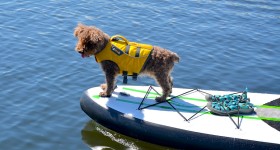

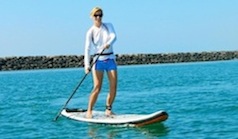
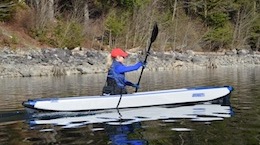
Explain the t grip position please with images.it seems like the fingers curl round it into the gap or is it on top of the curve???
What I found is that with the blade angled forward, the board turned early every stroke resulting in a need for correction. With it angled correctly, the initial part of the stroke kept the board straighter and the power came mid to end of the stroke. I tested that theory on my yak with the same results.
Useful tips for beginners. Thanks!